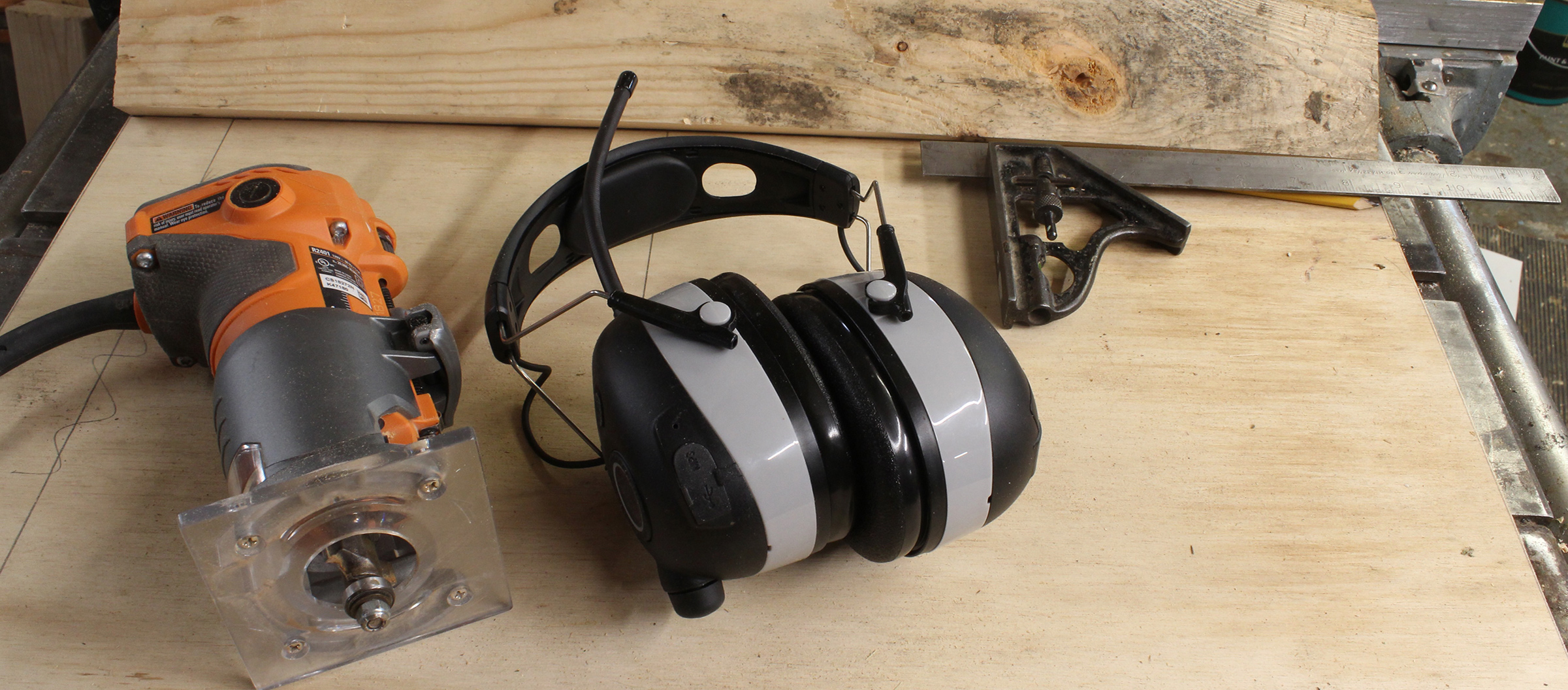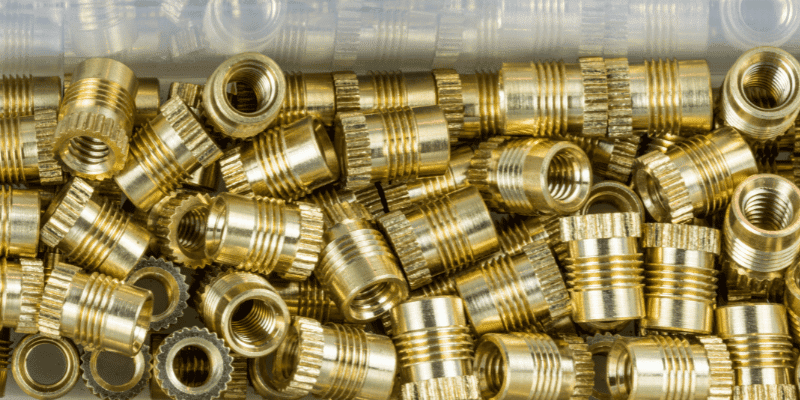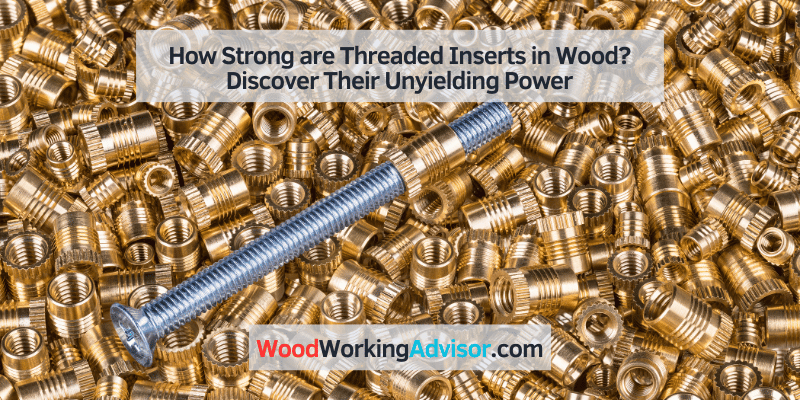Threaded inserts in wood are strong and reliable, providing secure anchoring for various applications. These inserts are designed to create a stable connection in wood by adding threads to the material, enhancing its strength and durability.
This allows for the insertion of screws, bolts, or other fasteners, ensuring a strong and long-lasting bond. Whether used in furniture, cabinetry, or other wooden structures, threaded inserts provide a secure anchoring solution that can withstand significant loads and stress.
Trustworthy and efficient, threaded inserts are the ideal choice for reinforcing wood and enhancing its overall strength.
Understanding Threaded Inserts
Threaded inserts provide impressive strength when used in wood projects. With their ability to securely anchor screws and bolts, these inserts offer a reliable solution for enhancing the structural integrity of wood pieces.
What Are Threaded Inserts?
Threaded inserts are metal fasteners used to provide a strong and durable connection in wood. These inserts have internal threads that allow screws to be securely inserted and tightened. They are designed to reinforce and strengthen the wood, making them perfect for applications where screws alone may not hold up well.
- Threaded inserts are often cylindrical in shape and come in various sizes and materials, such as brass, zinc alloy, or stainless steel.
- They are installed by drilling a hole into the wood and then screwing or hammering the insert into place.
- Once installed, threaded inserts create a reliable foundation for screws, bolts, or other fasteners.
How Do Threaded Inserts Work?
Threaded inserts work by providing a threaded surface within the wood, allowing for a secure attachment of screws or bolts. Here’s a brief overview of how they function:
- Threaded inserts have external threads that grip the wood, creating a stronghold.
- When a screw is inserted into the threaded insert, it engages with the internal threads of the insert, resulting in a tightened connection.
- The internal threads of the insert distribute the load evenly, reducing the risk of damage to the wood and preventing the threads from stripping out.
Advantages of using threaded inserts in wood:
- Increased strength: Threaded inserts significantly enhance the holding power of screws in wood, minimizing the risk of stripped threads or loosening over time.
- Versatility: These inserts allow for easy disassembly and reassembly of components, making them ideal for furniture, cabinets, or other wooden structures that may require maintenance or modifications.
- Increased durability: By using threaded inserts in wood, you can minimize wear and tear caused by repeated screw insertions and removals.
- Improved load-bearing capacity: Threaded inserts distribute the load across a larger surface area, reducing the likelihood of cracking or splitting in the wood.
- Enhanced precision: Using threaded inserts ensures accurate alignment of screws, resulting in a neater and more professional finish.
Incorporating threaded inserts in your woodworking projects can greatly benefit the overall strength, durability, and longevity of the finished product.
Types Of Threaded Inserts For Wood
Threaded inserts for wood come in different types, such as helicoil and knife thread, providing strong and reliable connections for various applications. These inserts offer durability and stability, making them an excellent choice when it comes to strength in wood projects.
Woodworking projects often require the use of threaded inserts to create strong and secure connections. These inserts come in different types, each with its unique features and benefits. In this section, we will explore three common types of threaded inserts for wood: screw-in inserts, press-fit inserts, and threaded inserts with flanges.
Screw-In Inserts:
- Screw-in inserts are designed with external threads, allowing them to be easily screwed into the pre-drilled hole in the wood.
- These inserts have sharp threads that bite into the wood, providing excellent holding power.
- Once installed, screw-in inserts allow for the repeated assembly and disassembly of screws without compromising their strength or the integrity of the wood.
- Commonly used in furniture making, cabinetry, and other woodworking applications where disassembly may be required.
Press-Fit Inserts:
- Unlike screw-in inserts, press-fit inserts do not have external threads. Instead, they rely on a tight press-fit into the wood.
- Press-fit inserts have serrated or knurled exteriors that create a secure grip within the wood fibers, ensuring stability.
- These inserts are typically hammered or pressed into a pre-drilled hole, offering a strong connection while avoiding the use of screws.
- Ideal for applications where permanent installation is desired, such as speaker stands, workbenches, and shop jigs.
Threaded Inserts With Flanges:
- Threaded inserts with flanges are designed to be installed flush with the wood surface.
- These inserts have a flange or collar that prevents them from being fully embedded into the wood.
- The flange provides additional support and helps distribute the load over a larger area, reducing stress on the wood.
- Threaded inserts with flanges are commonly used in applications requiring heavy-duty connections, such as outdoor furniture, decks, and structural components.
Understanding the different types of threaded inserts for wood is essential for selecting the right one for your woodworking projects. Whether you opt for screw-in inserts, press-fit inserts, or threaded inserts with flanges, each type offers unique advantages that contribute to the strength and durability of your wood connections.
Experimenting with different threaded inserts can help you achieve optimal results in your woodworking endeavors.
Factors Influencing The Strength Of Threaded Inserts In Wood
Threaded inserts in wood are influenced by various factors that determine their strength. These factors include the type of wood, insert material, insert size, installation method, and thread engagement. Considering these aspects ensures a robust and reliable connection for threaded inserts in wood.
Threaded inserts are a popular choice for reinforcing wood and providing reliable connections. The strength of these inserts can be influenced by several factors, including the insert material, design and dimensions, wood type and density, and the installation method. Let’s explore each of these factors in more detail:
Insert Material
The material from which the threaded insert is made plays a crucial role in determining its strength. Different materials offer varying degrees of durability and resistance to wear and tear. Some common materials used for threaded inserts in wood include:
- Brass: Brass inserts are known for their excellent corrosion resistance and good conductivity. They are commonly used in applications where aesthetics and electrical conductivity are important.
- Steel: Steel inserts are highly durable, providing strong connections and resistance to stripping or pulling out. They are often preferred for heavy-duty applications.
- Stainless steel: Stainless steel inserts offer similar strength to steel inserts but also provide superior corrosion resistance. They are ideal for applications that require resistance to moisture or harsh environments.
- Aluminum: Aluminum inserts are lightweight and have good corrosion resistance. They are often chosen for applications where weight is a concern.
Insert Design And Dimensions
The design and dimensions of a threaded insert can greatly impact its strength in wood. Some important factors to consider include:
- Shank and thread design: Inserts with a larger shank diameter or deeper threads tend to provide stronger connections. These features increase the surface area of the insert in contact with the wood, improving the load-bearing capacity.
- Length: The length of the insert should be appropriate for the thickness of the wood. If the insert is too short, it may not provide enough engagement for a strong connection. On the other hand, an excessively long insert may weaken the wood.
- Head design: Inserts with flanged heads or knurled exteriors offer better resistance against rotational forces. This helps prevent the insert from loosening or pulling out under load.
Wood Type And Density
The type and density of the wood used also influence the strength of threaded inserts. Different wood species have varying characteristics, such as hardness and density, which affect their ability to hold the insert securely. Factors to consider include:
- Hardwood vs. Softwood: Hardwoods, like oak or maple, are generally denser and provide better holding power compared to softwoods, such as pine or cedar. Softwoods may require larger inserts or additional reinforcing techniques.
- Grain orientation: Inserts tend to have better grip in wood with a straight grain compared to wood with interlocking or irregular grain patterns. It’s important to consider the orientation of the wood grain when installing threaded inserts.
- Moisture content: Wood with high moisture content, such as freshly cut or wet wood, may shrink or warp over time. This can affect the grip of threaded inserts. It’s advisable to ensure the wood is properly dried before installation.
Insert Installation Method
The method used to install threaded inserts in wood can impact their strength and overall performance. Some common installation methods include:
- Screw-in: In this method, the insert is screwed directly into a pre-drilled pilot hole. It provides a reliable and secure connection, especially when combined with appropriate adhesives.
- Heat-insertion: Heat insertion involves heating the insert to expand the surrounding wood fibers, allowing the insert to grip the wood more securely. This method is particularly useful for softwoods.
- Press-in: Press-in inserts are inserted into drilled holes using a press or mallet. This method can be effective for creating strong connections, especially when combined with suitable adhesives.
Considering these factors, it becomes evident that the strength of threaded inserts in wood relies on a careful selection of insert material, design, dimensions, wood type, density, and installation method. By taking into account these factors and choosing the appropriate combination, you can ensure a strong and lasting connection for your wood projects.

Credit: smallboatsmonthly.com
Testing The Strength Of Threaded Inserts In Wood
Discovering the true strength of threaded inserts in wood is a crucial task. Through rigorous testing, we can determine their actual capabilities, providing valuable insights for woodworking projects. Gain confidence in your woodwork with thorough evaluations of threaded inserts.
Importance Of Testing
- Testing the strength of threaded inserts in wood is essential to ensure their reliability and suitability for different applications.
- It helps determine the load-bearing capacity and durability of the inserts, giving valuable insights into their performance in real-world scenarios.
- Testing also helps manufacturers and users understand the limitations and potential risks associated with using threaded inserts in wood, enabling them to make informed decisions.
Common Testing Methods
- Tensile Testing: This method involves applying a pulling force to the threaded insert until it fails, measuring the maximum load it can withstand. It helps determine the insert’s tensile strength and resistance to pulling forces.
- Shear Testing: Shear testing involves applying a perpendicular force to the insert, simulating the type of stress it would experience when subjected to heavy lateral loads. It measures the insert’s resistance to forces applied parallel to the wood surface.
- Pull-Out Testing: This method involves exerting a force in the opposite direction to insertion to evaluate the insert’s resistance to being pulled out of the wood. It provides valuable information on the insert’s holding power and stability.
- Fatigue Testing: Fatigue testing assesses the insert’s ability to withstand repeated or cyclic loading, mimicking real-world usage conditions. It helps determine if the insert will hold up over time without succumbing to fatigue failures.
Factors To Consider During Testing
- Insert Material: The material used for threaded inserts can significantly impact their strength and performance. Testing different materials can provide insights into their suitability for specific applications.
- Wood Type: Different wood species have varying densities and structural properties, affecting the performance of threaded inserts. Testing in various wood types allows for understanding the insert’s compatibility with different woods.
- Insert Design and Size: Varying insert designs and sizes can influence their strength and stability in wood. Testing different designs and sizes helps identify the most effective options for specific applications.
- Insert Installation: The method of inserting the threaded insert into the wood, including factors like hole size, depth, and alignment, can affect its strength. Testing different installation methods helps determine the optimal technique for maximum strength.
- Environmental Factors: Testing threaded inserts in wood under different environmental conditions, such as temperature and humidity variations, provides insights into their performance in real-world settings.
Testing the strength of threaded inserts in wood is crucial for assessing their reliability and performance in different applications. Tensile, shear, pull-out, and fatigue testing methods help evaluate their load-bearing capacity and durability. Factors such as insert material, wood type, design, installation method, and environmental conditions should be considered during testing to ensure optimal performance.
By conducting thorough testing, manufacturers and users can confidently choose the right threaded inserts for their specific wood applications.
Comparing Threaded Inserts To Other Wood Fasteners
Threaded inserts are incredibly strong in wood, providing a secure and stable connection. Compared to other wood fasteners, threaded inserts offer superior strength and durability, making them an excellent choice for various applications. These inserts ensure long-lasting and reliable performance without compromising the integrity of the wood.
Threaded inserts are a popular choice for joining wood pieces due to their strength and reliability. They offer several advantages over other wood fasteners such as screws, dowels, and nails. In this section, we will compare threaded inserts to these alternatives in terms of strength, ease of installation, and durability.
Strength Comparison: Threaded Inserts Vs. Screws
- Threaded inserts provide superior strength compared to screws in wood applications.
- They create a more secure and durable connection, especially in materials prone to splitting.
- The internal threads of the inserts hold firmly onto the wood, offering excellent pull-out resistance.
- Threaded inserts distribute the load evenly, minimizing the risk of stress concentration points.
- Unlike screws, threaded inserts allow for repeated assembly and disassembly without compromising their holding power.
Ease Of Installation: Threaded Inserts Vs. Dowels
- Installing threaded inserts is a straightforward process that requires minimal effort and expertise.
- These inserts can be easily driven into pre-drilled holes using simple tools like a screwdriver or Allen wrench.
- In contrast, dowels require precise alignment and often need specialized equipment like doweling jigs.
- Threaded inserts eliminate the need for complex joinery techniques, making them suitable for both professionals and DIY enthusiasts.
- They offer a quicker and hassle-free installation, saving time and effort in woodworking projects.
Durability Comparison: Threaded Inserts Vs. Nails
- Threaded inserts have a clear advantage over nails when it comes to durability in wood applications.
- Nails are prone to loosening over time, especially when subjected to regular use or environmental factors.
- On the other hand, threaded inserts provide a more permanent and reliable connection.
- They eliminate the risk of nails popping out or becoming loose due to vibrations or changes in wood moisture content.
- Threaded inserts ensure a long-lasting joint, making them ideal for furniture, cabinetry, and other high-stress wood applications.
Threaded inserts offer exceptional strength, ease of installation, and durability compared to other wood fasteners. They provide a secure and reliable connection, surpassing the capabilities of screws, dowels, and nails. Whether you are working on a DIY project or professional woodworking, threaded inserts are a versatile solution that ensures a strong and long-lasting joint in wood.

Frequently Asked Questions For How Strong Are Threaded Inserts In Wood
How Much Weight Can Threaded Insert Hold?
Threaded inserts can hold a weight depending on the material and size of the insert.
Should I Glue Threaded Inserts In Wood?
Yes, it is recommended to glue threaded inserts in wood for secure and durable installation.
What Are The Disadvantages Of Threaded Inserts?
Threaded inserts have their drawbacks, including potential thread damage, increased installation complexity, limited design flexibility, and additional cost.
How Do You Secure Threaded Inserts In Wood?
Secure threaded inserts in wood by following these steps:
1. Drill a hole in the wood to match the size of the insert.
2. Apply epoxy adhesive to the outside surface of the insert.
3. Twist the insert into the drilled hole until it is snug.
4. Allow the epoxy to cure completely before applying any load to the insert.
Final Thoughts
To wrap up, threaded inserts are a valuable tool for enhancing the strength of wood structures. Their ability to distribute loads evenly and resist pull-out forces make them a reliable option for various applications. Whether you’re working on furniture, cabinetry, or decking, threaded inserts offer a convenient and durable solution.
By following proper installation techniques and considering factors such as insert material, thread type, and size, you can ensure their effectiveness. As a key factor in woodworking, these inserts provide enhanced stability, longevity, and versatility to your projects. With their ability to withstand heavy loads and prevent stripping, threaded inserts are a valuable addition to any woodworker’s toolbox.
So go ahead and explore the possibilities they offer – from creating strong joints to repairing damaged threads – and enjoy the confidence that comes with the rock-solid durability of threaded inserts in wood.



One thought on “How Strong are Threaded Inserts in Wood? Discover Their Unyielding Power”